The Scott Expedition. The mention of it brings to mind a brutally cold, disappointing, and fatal attempt to be the first to reach the geographic South Pole. Robert Falcon Scott set out in 1910 on the Terra Nova Expedition to accomplish this feat. It took him three years and he was sorely disappointed to find when he got to the Pole that Roald Amundsen had beaten him there by 33 days. Scott arrived at the South Pole on January 16, 1912 only to find a letter in a tent stating that Amundsen had arrived four weeks earlier on December 14, 1911.
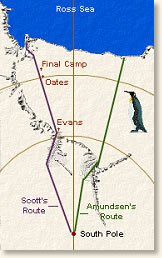
Link: http://www.eyewitnesstohistory.com/scott.htm
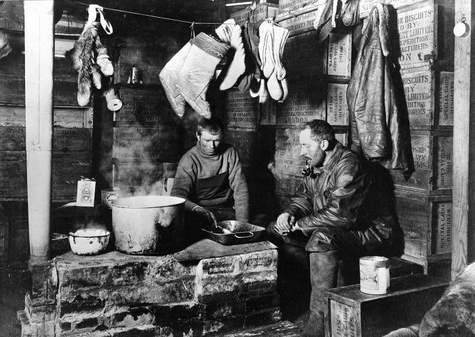
Link: http://mp.natlib.govt.nz/detail/?id=22231
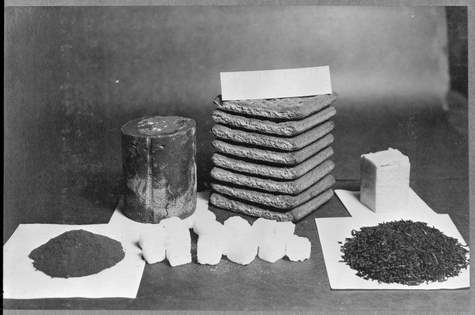
Link: http://mp.natlib.govt.nz/detail/?id=37009
The expedition was ill-fated from the start. Scott originally planned to use Siberian ponies but the depth of the snow and extreme cold made hauling sledges impossible. After the ponies died, Scott and his team man-hauled the sledges to the South Pole and back. If they had made it back to their base camp, they would have pulled these sledges a distance of 1,766 miles. On their return from the Pole, they were faced with blizzards and extreme weather that slowed their progress greatly. On February 17, 2012, the first of the five team members, Evans, died. On March 16th or 17th (they lost track of the days) Titus Oates left the tent in a blizzard, uttering the famous words, "I am just going outside and may be some time." They never saw him again. Scott's final entry in his diary was on March 29th. "It seems a pity, but I do not think I can write more."
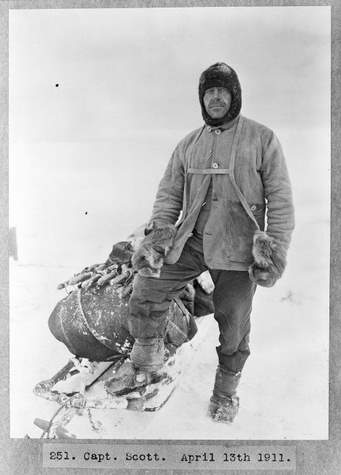
Link: http://mp.natlib.govt.nz/detail/?id=33372
On November 12, 1912, roughly six months after Scott's final entry, a search party came upon the tent containing the bodies of Scott, Bowers, and Wilson. The party attempted to find Oates, but found only his sleeping bag.
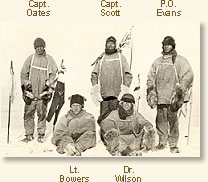
Link: http://www.eyewitnesstohistory.com/scott.htm
Fortunately, Scott's Discovery Hut is right by McMurdo. After reading about the history of Antarctic exploration and these stories of courage and perseverance, I was excited to be able to tour the inside of the hut. The hut is kept locked to preserve the contents, but if you sign up for a tour, you can go inside. The preservation of materials within the hut is quite amazing. Not only are the tinned goods (still sealed) lined up on shelves and in crates present, but animal carcasses that they were eating are still there. (Antarctica's climate is so cold and dry that things remain preserved.) Everything is left as it was when they just got up and walked out.

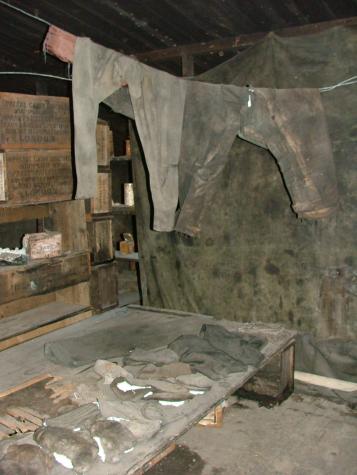
As you walk in the door of the hut, the first thing you see are bales of hay that were brought down to feed the ponies. Off to one side is the cold storage room where mutton carcasses are still hanging (the smell in this room is slightly gamey). Coming out of here, you enter one of the two main rooms. Alongside the wall are seal carcasses. The seals were consumed for meat and their blubber burned to provide warmth. Everywhere you see stacks of crates that contained tinned or boxed food for the men as well as crates of dog biscuits for their dogs. In the second main room there is the blubber stove and clothing from the expedition. The final room in the hut contained more shelved storage.

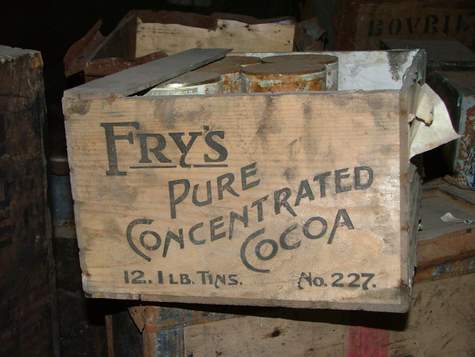
To hear Sir David Attenborough's description of Scott's Discovery Hut and his thoughts on Antarctica broadcast on BBC's Radio 4, go to:
http://news.bbc.co.uk/today/hi/today/newsid_8474000/8474067.stm
To be able to see artifacts from these remarkable men and their journey was very sobering, yet inspiring. Most people now days would be hard pressed to survive the conditions they endured, especially for such an extended period - 3 years! Yet, if they had not been committed to the exploration and scientific discovery of Antarctica, the groundwork that underlies today's Antarctic research would be lacking. Today, scientists explore Antarctica in the relative "lap of luxury". They take airplanes, helicopters, and tracked transport vehicles to reach their destinations. However, when in the actual field, once the technology has departed, they return to a similar condition. Granted, our clothing technology has improved, especially with synthetic materials, but much of the camping gear remains the same. Many expeditions still use the Scott tent which is essentially still the same design as Scott's tents had 100 years ago.
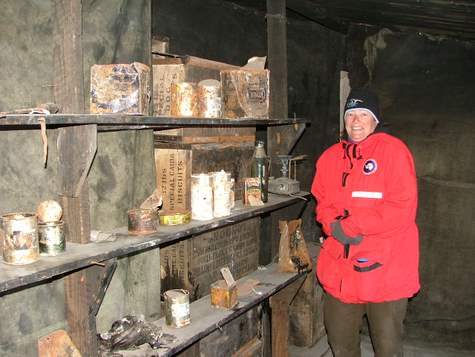


Comments